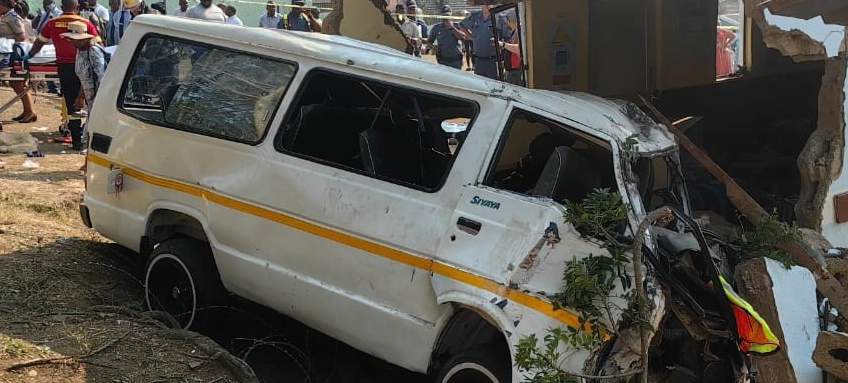
South Africa’s economy finds itself at a crucial juncture. While multiple indicators point towards an ongoing structural decline, recent policy adjustments and economic activities suggest the possibility of a gradual recovery. The critical question remains: Will South Africa descend further into turmoil, or is there a path toward stabilization and growth? A closer analysis of essential economic factors reveals that, although a total collapse appears unlikely, various challenges persist that may impede the nation from realizing its full potential.
Demographics: opportunity or liability?
ADVERTISEMENT
CONTINUE READING BELOW
South Africa features a youthful population, with a median age of 28. Ideally, this should be an asset; however, youth unemployment exceeds 50%, posing a significant threat to social stability. Additionally, declining birth rates (1.9 births per woman) indicate that the workforce may contract in the coming decades, reflecting trends seen in Japan and Europe. If structural reforms lead to job creation, a demographic dividend may stimulate growth. Conversely, prolonged unemployment could result in stagnation and social unrest.
Deindustrialisation and trade pressures
The manufacturing sector’s contribution to gross domestic product (GDP) has fallen from 25% in the 1980s to a mere 13% today. The economy remains heavily reliant on raw material exports, making it susceptible to global commodity price fluctuations. Additionally, advancements in automation and artificial intelligence threaten to eliminate low-skilled jobs, underscoring the increasing importance of education and skills training. While trade relations within Brics offer opportunities, South Africa primarily exports raw materials instead of high-value goods, limiting its economic potential.
Energy crisis: Eskom’s decline, private sector’s rise
Eskom’s ongoing failures have severely impacted the economy, with load shedding leading to decreased productivity and eroded investor confidence. However, in 2023 alone, over 5,000 MW of private-sector renewable energy projects were approved—surpassing the combined capacity of Medupi and Kusile. Eskom’s shift to remove black economic empowerment (BEE) procurement requirements signifies a move towards efficiency over racial quotas. Continued private investment in energy could potentially alleviate South Africa’s electricity crisis within the next five to ten years. Nevertheless, with 80% of electricity still generated from coal, a transition towards decarbonization will be vital to remain competitive in global markets.
Debt, taxes, and fiscal instability
South Africa’s government debt is approaching 75% of GDP, with interest payments consuming nearly 20% of state revenue. Approximately 50% of South Africans depend on social grants, creating untenable fiscal pressure. Simultaneously, high-income earners and businesses are either relocating abroad or moving capital offshore, shrinking the tax base.
Without increased economic growth, the government will face tough choices: higher taxes, spending cuts, or a bailout from the International Monetary Fund.
Political shifts: from state control to private innovation?
ADVERTISEMENT:
CONTINUE READING BELOW
The decline of state-owned enterprises, such as Transnet, Eskom, and South African Airways, has lessened government control over significant industries, paving the way for private-sector solutions to emerge. The relaxation of BEE policies and procurement reforms suggests a shift from redistribution towards economic efficiency. This trend could accelerate if a reform-minded coalition or party arises in upcoming elections. However, if the African National Congress aligns with populist factions like the Economic Freedom Fighters, it may heighten economic uncertainty and deter investors.
The final verdict: Will SA make it?
The future of South Africa likely lies somewhere in between:
- Worst-case scenario (20%-30% probability): Continued economic mismanagement accelerates fiscal collapse and political radicalization, driving the nation towards a Zimbabwe-like decline.
- Best-case scenario (30%-40% probability): Market-friendly reforms lead to increased private investment, stabilizing the country and achieving steady, albeit slow, growth.
- Most likely scenario (40%-50% probability): South Africa experiences a gradual, uneven recovery, avoiding collapse yet failing to reach its full potential due to political and structural constraints.
While risks remain, there are signs of resilience. The private sector is addressing gaps created by government failures, policies are shifting towards growth rather than redistribution, and crucial industries are undergoing necessary reforms. South Africa is unlikely to face total collapse; however, without significant structural changes, it will continue to be a fragile but high-potential economy, perpetually balancing between crisis and recovery.
Dr. Francois Stofberg is a financial well-being economist at the Efficient Group.
Follow Moneyweb’s comprehensive finance and business news on WhatsApp here.






